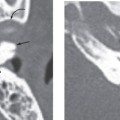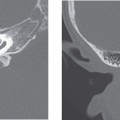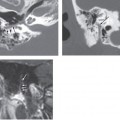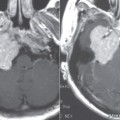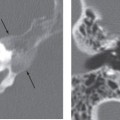CHAPTER 35 Large Vestibular Aqueduct Syndrome
Epidemiology
Large vestibular aqueduct syndrome is one of the most common anomalies seen in patients with congenital sensorineural hearing loss (SNHL), and is the most commonly identified radiologic anomaly on cross-sectional imaging of the inner ear. Valvassori and Clemis first described this anomaly in 1978; they reported their conventional polytomographic findings in 50 patients and named this condition the large vestibular aqueduct syndrome (LVAS). It has been reported to be bilateral in 55 to 94% of cases. LVAS is typically associated with other malformations of the inner ear. The most common malformation is a modiolar deficiency, which lies along the spectrum of a Mondini malformation. In fact, in Mondini’s original description of the malformation, the child was also noted to have an enlarged vestibular aqueduct. Hence there is some debate as to whether these entities should even be considered separate. Overall, it is common to consider LVAS a separate entity from a Mondini malformation. Isolated LVAS without involvement of the rest of the inner ear structures is uncommon, present in 0 to 14% of the patients.
Clinical Features
Patients might be asymptomatic, or present with a sensorineural hearing loss that may be mild to profound. The hearing loss can be fluctuant and progressive, often with sudden, stepwise onset or progression, sometimes secondary to trigger activities such as the Valsalva maneuver, minor head injury, common cold, scuba diving, and others.
Anatomy and Embryology
Stay updated, free articles. Join our Telegram channel

Full access? Get Clinical Tree


